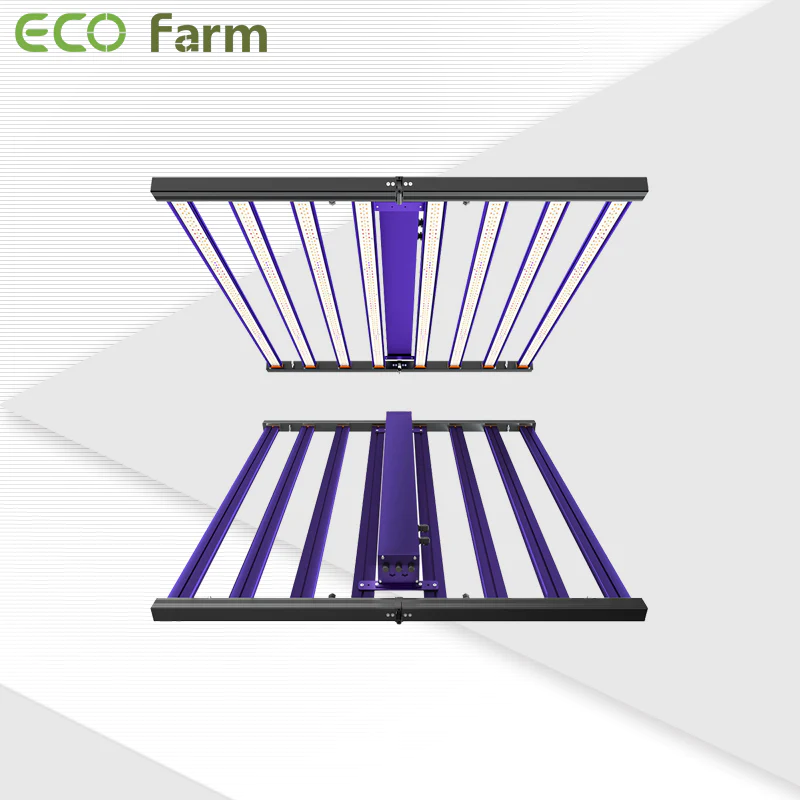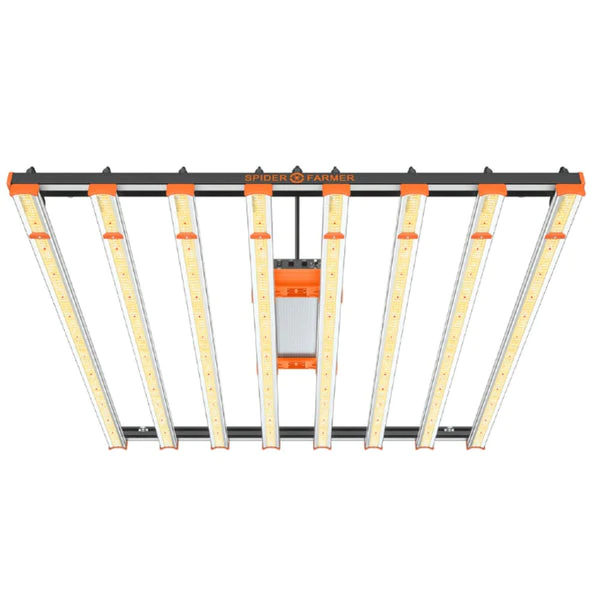Indoor growers have been using light to grow plants for decades. But like everything, technology is advancing rapidly, and full-spectrum LED grow lights are taking their place in the industry.
Full-spectrum LED grow lights have their own research: Recent studies have shown that plants especially prefer green light — more of it in LED lights than in other types of lights. Also, the green light penetrates the leaves so the lower leaves and stems absorb more light, which in a competitive and growing industry where every dollar counts helps produce under the canopy Bigger Coke. Some growers are using full-spectrum LED grow lights as their sole light source; others are using them to supplement growth — such as in greenhouses.
What Should I Pay Attention To When Using Grow Lights?
Energy use can be reduced by up to 75%.
The service life of the diode is much longer than that of the traditional bulb, so the maintenance cost is lower.
Flexible lighting adjustment. They can be dimmed or turned on immediately.
It can be used at various temperatures to ensure color accuracy.
Fixing devices can be placed close to plants to improve efficiency.
Reduce wire size and associated wire costs.
ECO Farm ECO D700 700W Samsung LM281B Chip LED Grow Light

Features:
This ECO Farm LED grow light has the highest output of white chip and Osram chip, with high energy efficiency of 2.6 umol/J, PPF 1820 µmol/s, LED grow light provides plants with powerful and high quality light to maximize the Yield. The vegetable footprint is 5 x 5 feet and the flowering footprint is 4 x 4 feet. With an excellent full spectrum (3000K, 5000K, 660nm, 730nm IR, 395nm UV), it can make the light more uniform, truly simulate sunlight, and perfectly meet the entire growth cycle of all plants from seed to harvest, resulting in higher yields. The dimming knob can adjust the light intensity at will (from 0% to 100%), and the daisy chain can be up to 100 units, which easily meets the plant development process, including germination, nutrition, flowering, and fruiting. Foldable for easy placement and portable installation, the adjustable adapter has an RJ45 interface, which can control multiple plant lights in series, which is convenient for you to plant in a large area.
Spider Farmer SE7000 730W Full Spectrum LED Grow Light

Features:
This Spider Farmer LED grow light features a uniquely designed extension of 8 bars to provide more even and complete canopy coverage, especially in outer edge planting areas. With 2688 SAMSUNG LM301B diodes, the SE7000 Led Grow Light consumes 730 watts at 2045 umol/s, achieving an impressive PPE of 2.8 umol/J. The full spectrum (3200–4200K, 4800–5000k, 650–665nm) is ideal for vegetable flowering to suit every stage of the plant cycle. The dimmer knob is ideal for growers to adjust the light intensity for different growth stages. The strip grow light design and the aluminium radiator on the back contribute to better airflow and good heat dissipation. The LED diodes are coated with water repellent, so there is no need to worry about a wet environment.
What to Look for When Buying LED Grow Lights
With so many different LED grow lights on the market, it can be difficult to know which one is best for your needs. Here’s everything to look out for and consider when buying LED grow lights:
Spectrum
All colors of the electromagnetic spectrum exist in natural sunlight. Some LED lights can only reproduce specific color frequencies, while full-spectrum white LED lights can produce all the shades needed for each stage of the plant growth process.
For example, blue light stimulates plant growth at an early stage. It is the first color a plant is able to absorb when it is in the vegetative state.
Second, violet light is also used in the vegetative state, but it has less effect on photosynthesis than blue light.
Red light is important for flowering and helps the plant grow in its final stages. White light, on the other hand, encompasses the entire color spectrum. Used alone, it can help at every stage of development.
Light Intensity
When it comes to light intensity, there are two approaches. The first is photosynthetic photon flux (PPF), also known as photosynthetic photon flux density (PPFD) (PPFD).
This is important because it indicates the amount of light the plants are absorbing from the LED grow lights. When looking for grow lights, compare the amount of light your plants need with the strength of your PPF or PPFD.
Another way to look at grow lights is by their lumens, which measure the amount of visible light they emit.
Coverage
Grow lights are usually measured for the amount of plant and bloom coverage they provide. Make sure the lights you choose emit the right amount of light and cover the area you want to grow, such as an indoor garden space or a grow tent.
Adjustable
Several aspects of LED grow lights should be adjustable. The first thing to consider is color. Many of today’s LED grow lights come with programmable settings that allow them to emit light of different color wavelengths. This allows you to adjust light types at various scales for plants in various stages of their life cycle.
In addition to being able to change the color of the light, LED growers often have knobs that allow them to change the brightness of the bulb for optimal light intensity.
You can also adjust the distance of the light from the plants by adjusting the length of the rope or chain that hangs the plants. This allows you to move the lights closer or further away from the plants.
Other Factors
Other factors to consider when looking for the best LED grow lights are the length of the power cord, whether it has a built-in timer, and the lifespan of the light.
Conclusion
Just five years ago, LED grow lights were inferior to HIDs in many ways. Most professional growers prefer to use HPS lighting. More modern clothing is turning to CMH.
But today, LED grow lights have far surpassed other types. Their prices have dropped. go down. Now you can get incredible LED fixtures for just a little more than a premium HID system. The cost savings from operating the lights quickly made up for the difference.
There are basically four main options on the market right now: blur lights, COB lights, quantum board lights, and strip lights. The latter three feature full-spectrum white light. Among them, strip lights are currently the most popular, followed by quantum boards.
However, all 4 types are excellent for growing and flowering plants. Whichever you choose depends on your preferences and where you stand on the white light vs. dim light debate.
